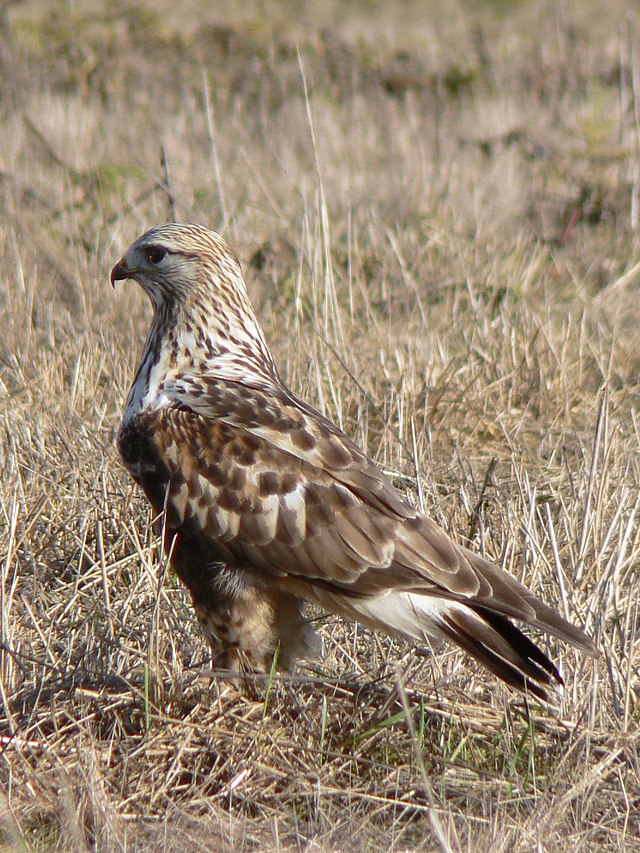The ground held a faint trace of snow as we wandered through Killdeer Plains that morning, looking for winter specialties. Raptors were already on our radar, with lots of Red-tailed hawks and Kestrels, but a slender buteo hawk sitting on a tiny sprig out in a field caught our eye. Just by the behavior alone, our leader Bill confidently said “Rough-legged Hawk,” yet all we could see was a tiny blob of a buteo with a pale head. As if on cue, the bird soared off its perch, revealing the pale wing linings and tail, the latter with its dark tip band. It turned out to be the first of several that day. Apparently, it was an invasion year for this species.

Not all winter irruptives are finches. Predatory birds also irrupt from Canada when their prey items run low. Snowy Owls and Great Gray Owls are probably the most sought-after of these winter raptors, but hawks can do it as well. You’ve probably noticed the uptick of Red-tailed Hawks and Kestrels along roadsides in winter. Rough-legged Hawks also fit this pattern, but they don’t show up in the same place or in the same numbers each winter. They are tundra breeders that have a high tolerance for cold and snow, as long as they have enough small mammals to catch for food. Their numbers seem to fluctuate yearly, probably in synch with their rodent prey. Here’s a great summary of their biology: https://birdinginsider.com/wild-birds/rough-legged-hawk-guide/
Part of the problem is that Rough-legs are very particular about their habitat, even in winter. They are open-country buteos that specialize in hunting small rodents and sparrows. A friend used to call them “the buteo that thinks it’s a kestrel.” They share the Kestrel’s proclivity for open grasslands like prairies, sod farms, and airports. They also share some of the Kestrel’s habits, perching on tiny little branches or bushes, or hovering in the wind to search for prey in the grass below. But they are a buteo, which brings a different body plan. They have low “wing loading” for a buteo, which means that their large wings aren’t carrying a very heavy body. This allows them to soar effortlessly and hover; they even have a slight dihedral (“V”) to their wings, like other great soarers. Here’s a good video of their flight marks and behaviors: https://www.youtube.com/watch?v=CFzUDvtsVGw

Rough-legs’ specific habitat needs have always restricted their numbers in Ohio. We don’t have any breeders – they breed up in the tundra of northern Canada and Alaska, even into Siberia. Wintering birds are surprisingly cold-tolerant, perhaps speaking to their success at catching small rodents even in snowy conditions. Perhaps unsurprisingly, the best places to see these birds are in areas with large open swaths of grassland or shortgrass prairie. Killdeer Plains always seems to host a few, often more during invasion years. Also look for them at prairie restorations like at Battelle Darby or Big Island, and airports. They seem to be especially attracted to the grasslands of the OSU airport and its neighboring pastures. If this is an invasion year, it would be a good time to check some of these areas to locate a few of these fascinating hawks.

